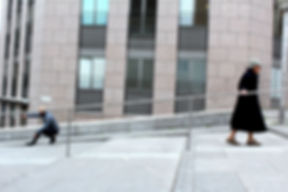
Your body is the ground metaphor of your life, the expression of your existence. So many of us are not in our bodies, really at home and vibrantly present there. Nor are we in touch with the basic rhythms that constitute our bodily life. We live outside ourselves - in our heads, our memories, our longings - absentee landlords of our own estate. My way back into life was ecstatic dance. I reentered my body by learning to move myself, to dance my own dance from the inside out, not the outside in.
~ Gabrielle Roth
Dancing is not just getting up painlessly, like a leaf blown on the wind; dancing is when you tear your heart out and rise out of your body to hang suspended between the worlds.
~ Rumi
There is a voice that doesn't use words. Listen.
~ Rumi
What is Conscious Dance?
Our mother tongue
There is an ancient language, a form of communication that breaks through social barriers. A language that has no past or future tense and in which we cannot lie. The very act of speaking this language is a process of unveiling, peeling off layer after layer, until there is nothing left...
We cannot speak this mother tongue without a deep kind of listening. For this we have to release our automatic pilot of its duties of filtering, labeling, and judging incoming information. It takes some practice, but with deliberate attention we can experience sounds and silence afresh. This gentle practice of attending to both the inner and outer world is a form of deprogramming. It is a cultivation of a beginner's mind.
Conscious Dance
Conscious Dance is not a single practice or school but stands for a family of movement practices all working with dance and consciousness. To name a few: Authentic Movement, 5Rhythms, Biodanza, Soul Motion, Continuum Movement, Butoh, Open Floor, Movement Medicine, and Ecstatic Dance . All these different forms have their specific flavor and emphasis, like shamanism, somatics, or relationships. What they share are common elements:
-
Brave Space - Conscious Dance asks for a space where people can come as they are and move as they feel. A space where people can both be playful, experimental and respectful for each other's boundaries. All Conscious Dance forms try to build such a ‘brave space’ and loosen the grip of social conventions, like ‘dancing pretty’ or ‘only showing safe emotions’. In this way, the dance floor becomes a laboratory for life, where we can make mistakes, play, and grow. It also becomes a place where new conscious communities can grow and flourish.
-
Experience - In Conscious Dance the experience and unfolding process are central and not the form (how it looks) or an end goal. It is "moving from the inside out, not the outside in.' Because of this emphasis, performance is often not a part of the practice. However, performing dance can be part of Conscious Dance. For example in the form of ritual theater. In my teachings I do often use performative elements.
-
Dance Journey - Most Conscious Dance forms facilitate dance in such a way that it becomes a journey. People can move through a heartbreak, dare to be vulnerable with a partner, or disappear deep in trance to a timeless time. This journey makes Conscious Dance so transformative. And as the examples show, the dance journey can be psychological, relational, spiritual, and more.
Different Conscious Dance forms describe the elements above in their own language, such as the 5Rhythms. However, in my view they share an underlying language: an ancient mother tongue.
Meeting an old friend
In Conscious Dance we listen with our whole body. The body is the place where life is experienced. Meeting an old friend, rushing through traffic, all these things are felt in the body. These bodily sensations are pregnant with meaning. Meeting one old friend may feel very different from the next. Sadly, we have learned to ignore and override this felt sense. Perhaps something in your chest constricts as you approach this old friend, but instead you smile and produce a friendly 'How nice to see you'. Cultural & social conventions, schooling & upbringing, beliefs & identifications: all these make it hard to listen to our body's wisdom.
The words 'body wisdom' sound very appealing, but in practice often feel like nothing special. It could be this vague, nagging feeling in the pit of your stomach. Our conditioning, beliefs and identifications, on the other hand, are loud and clear: "This is wrong", "Play nice", "Don't be a cry baby." As a body-based, movement practice that is largely done in silence, Conscious Dance lowers the volume of this inner dialogue. It makes it easier to attend to our bodily intuitions. We move from a deep listening, like a poet that is trying to find the next word. With each move our body can say "yes, that is it" or "no, this does not feel right." Each time we find the right expression, the sensations shift and life moves forward. In this way, what was once ignored can find expression and what wants to grow can emerge.
Under the programs and calendar you can read more about my work with Conscious Dance.
